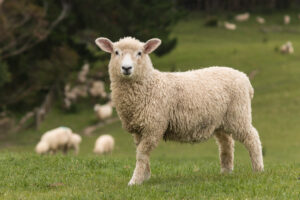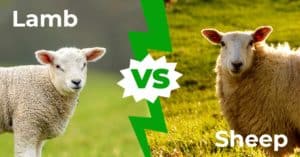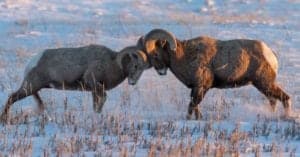Have you ever been curious as to why baby sheep have such oddly shaped eyes? Or maybe you have heard that old rumor that they have four or five stomachs. If you want to learn the mystery of those things or learn something completely new about baby sheep, you have come to the right place. We have the answers to all your burning baby sheep questions and much more. Let’s jump right in to learn more about adorable baby sheep!
#1: A Baby Sheep is Called a Lamb!
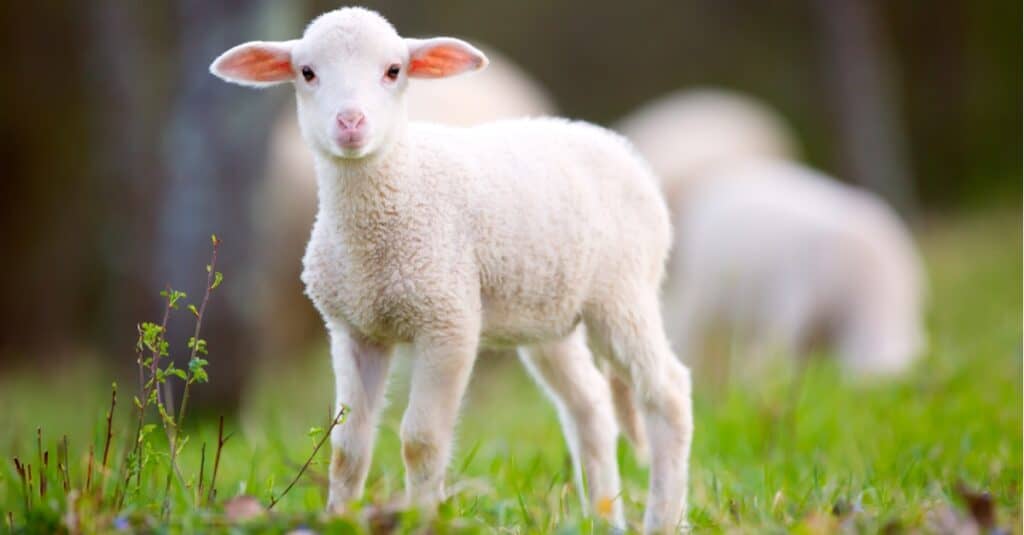
Lamb is the name for a baby sheep!
©iStock.com/Filip_Krstic
A baby sheep under a year old is called a lamb. A female sheep under a year old is called a ewe lamb until she reaches age one – then she is called a ewe. A male sheep under a year old is called a ram lamb – then just a ram. A group of sheep is called a flock and a very large group is called a mob.
#2: Lambs Have Almost 360 Degree Vision
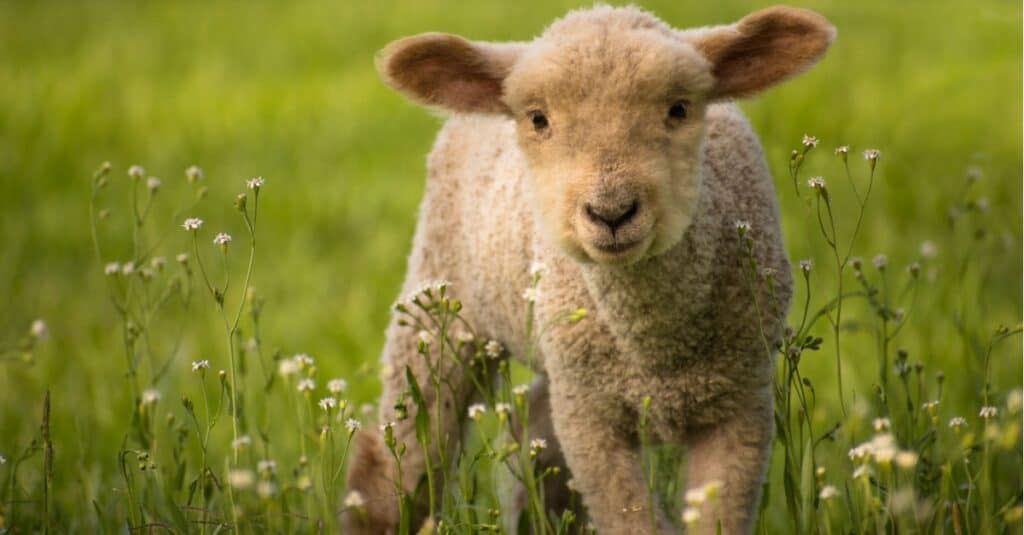
Lambs’ 360 degree field of vision helps keep them safe from predators.
©iStock.com/Sebastian Jakimczuk
In general, sheep are prey. That means their babies, the lambs, are even more vulnerable to predators. Consequently, lambs are born with rectangular pupils that help them see up to 360 degrees around themselves. This allows them to evade attackers coming from practically any direction.
By comparison, humans can only see about 150 degrees with peripheral vision. Sheep’s field of vision, on the other hand, can range from 250 to 360 degrees. In other words, they can see almost the entire way around them without having to turn at all.
#3: Lambs Are Born With A Four Chambered Stomach
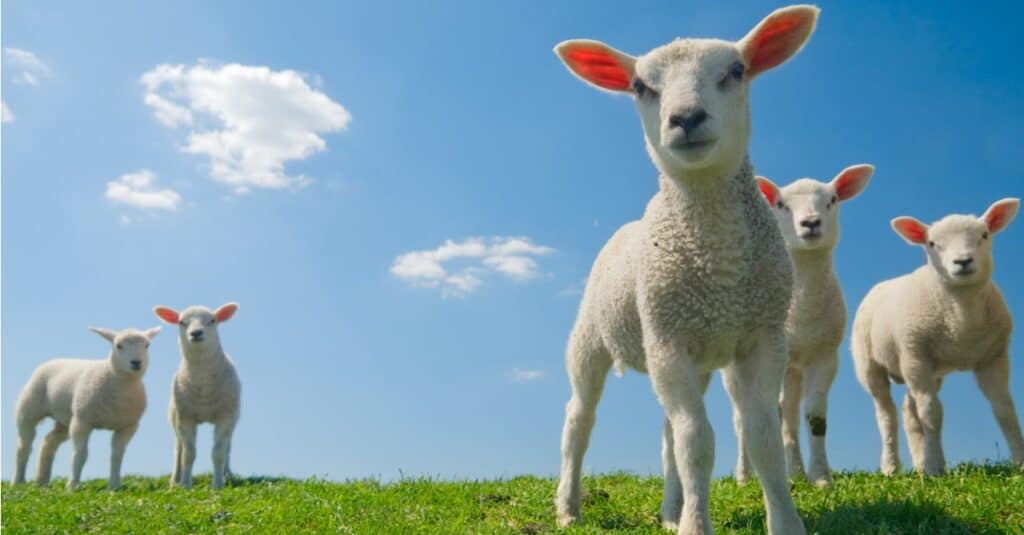
Lambs have four chambers in their stomachs.
©iStock.com/Enjoylife2
A common misconception is that ruminants, which are animals that don’t have to chew their food entirely, have more than one stomach. However, that’s not entirely true. The truth is that they only have one stomach that has multiple chambers to it.
Because there are multiple chambers, a baby sheep’s stomach takes up about eighty percent of its body cavity. The four chambers of their stomachs are called the rumen, the abomasum, the reticulum, and the omasum.
Each chamber does a specific thing for digestion. However, the biggest use they have for their many chambered stomachs is the ability to obtain nutrients from food without completely chewing it.
#4: Lambs Have Excellent Sense Of Smell
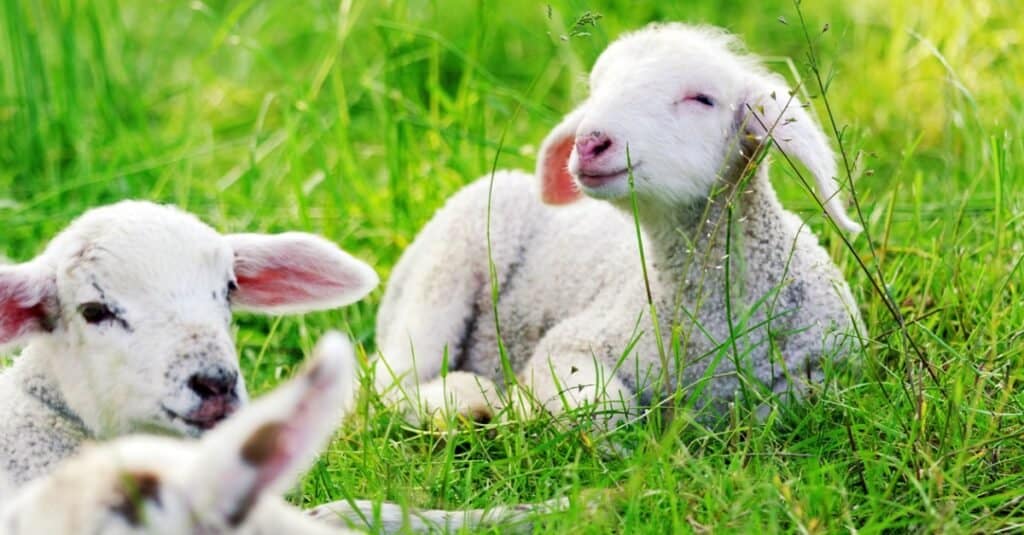
Sheep babies use their excellent sense of smell to find water and detect predators.
©iStock.com/Matthäus Rojek
Baby sheep are born with scent glands on their feet and even in front of their eyes. Lambs use their sense of smell to find their mothers and also to avoid predators. Adult sheep use their sense of smell to find water sources, avoid predators, and find the best pastures to graze in.
Baby sheep’s hoof glands secrete a thick oil that they can always identify as their own. They can also identify other sheep’s scent gland secretion. This means a mother and baby are able to identify each other. These glands are very sensitive and can get infected or impacted easily. Consequently, veterinarians recommend that they are closely tended to on a regular basis.
#5: Singleton Pregnancies are Longer than Multiples in Sheep!
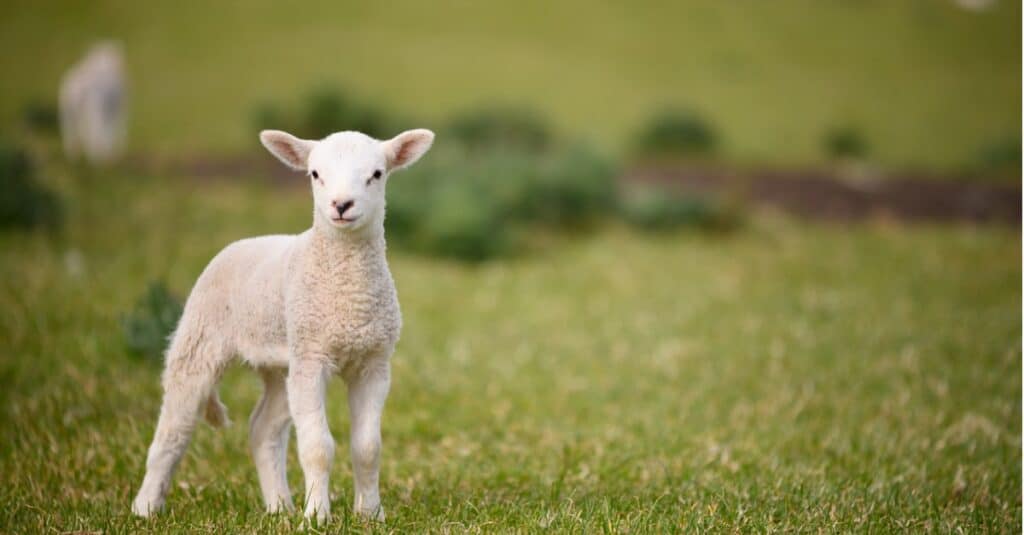
Mother sheep carry singleton pregnancies longer than twins!
©iStock.com/Gareth Webb
Did you know that single pregnancies have longer gestation periods than multiples in sheep? It’s true! Baby sheep, or lambs, gestate for around 150 days. Even though twins usually take less time to mature, most babies are born mature enough to walk just moments after being born.
Baby sheep are dependent on their mothers for 4-6 months after birth. Lambs drink colostrum from their mothers’ utters within the first 30 minutes of being born. Colostrum is full of nutrients and antibodies to help protect baby sheep from diseases and infections. After a day, the ewe will begin to produce milk, which the baby sheep will suckle several times an hour until about 5 weeks old. At this point, it will suckle 2 times an hour.
Because they are ruminants, baby sheep stand to graze and do just about everything from now on. They even sleep standing up since they are prey animals. They also sleep very lightly and for short periods, usually about 5 hours a day, to protect themselves from predators.
#6: Baby Lamb Hair Is Incredibly Soft
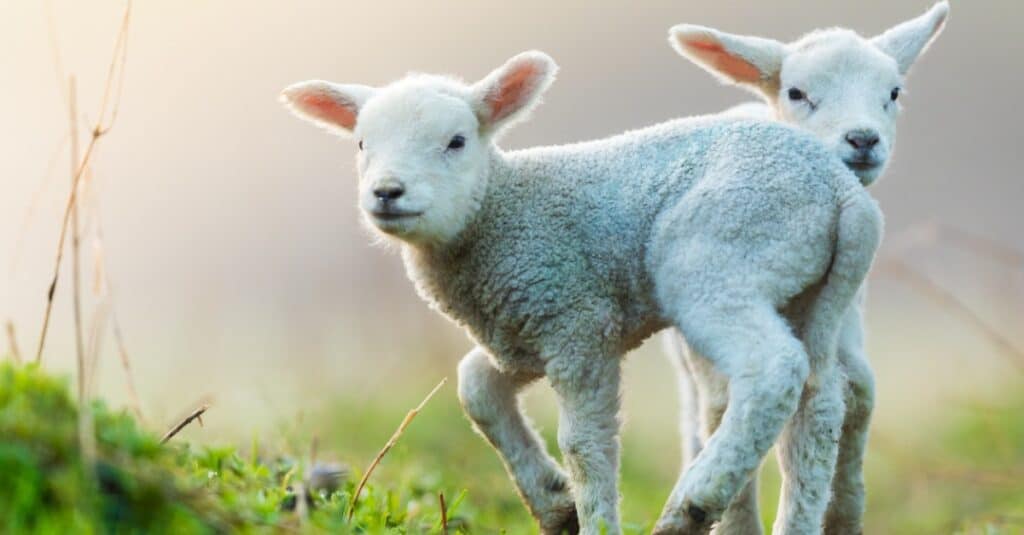
Lambswool is fleece that comes off of a baby sheep that is seven months to one year old.
©iStock.com/Jag_cz
When sheep get sheared for the first time around a year old, they have what’s called a fleece. This fleece is extremely dense and water-resistant. Lambs, however, have very soft but still very thick hair called lambswool.
When sheep’s wool is sold, lambswool is significantly more expensive than the fleece of an adult sheep because of how soft it is. Lambswool usually comes from a baby lamb that’s between seven months to a year old.
The photo featured at the top of this post is © iStock.com/Filip_Krstic
FAQs (Frequently Asked Questions)
What is a baby sheep called?
A baby sheep is called a lamb. A female sheep over a year old is called a ewe while a male is called a ram. A flock is a group of sheep.
How much do baby sheep weigh?
Sheep weigh from seven to thirteen pounds at birth. Lambs seem to put on weight fairly quickly because by the time they’re two months old they weigh from thirty-five to sixty pounds if they’re healthy. Adult male sheep can weigh up to four hundred pounds while adult females can weigh up to two hundred and fifty pounds.
What do baby sheep eat?
When lambs are born, they nurse from their mothers. However, they start to eat solid foods soon. By the time they are about a month old, they’re getting half their nutrients from solid foods such as the hay and grass they graze on. Sheep eat plant material and are also known to like fruits and other vegetation as well.
Where do baby sheep live?
Sheep were the first animals to be domesticated and many remain that way today. When domesticated they usually live on farms or large properties where they have fields to graze in. Most wild sheep live in North America, Europe and the Middle East.
Thank you for reading! Have some feedback for us? Contact the AZ Animals editorial team.




